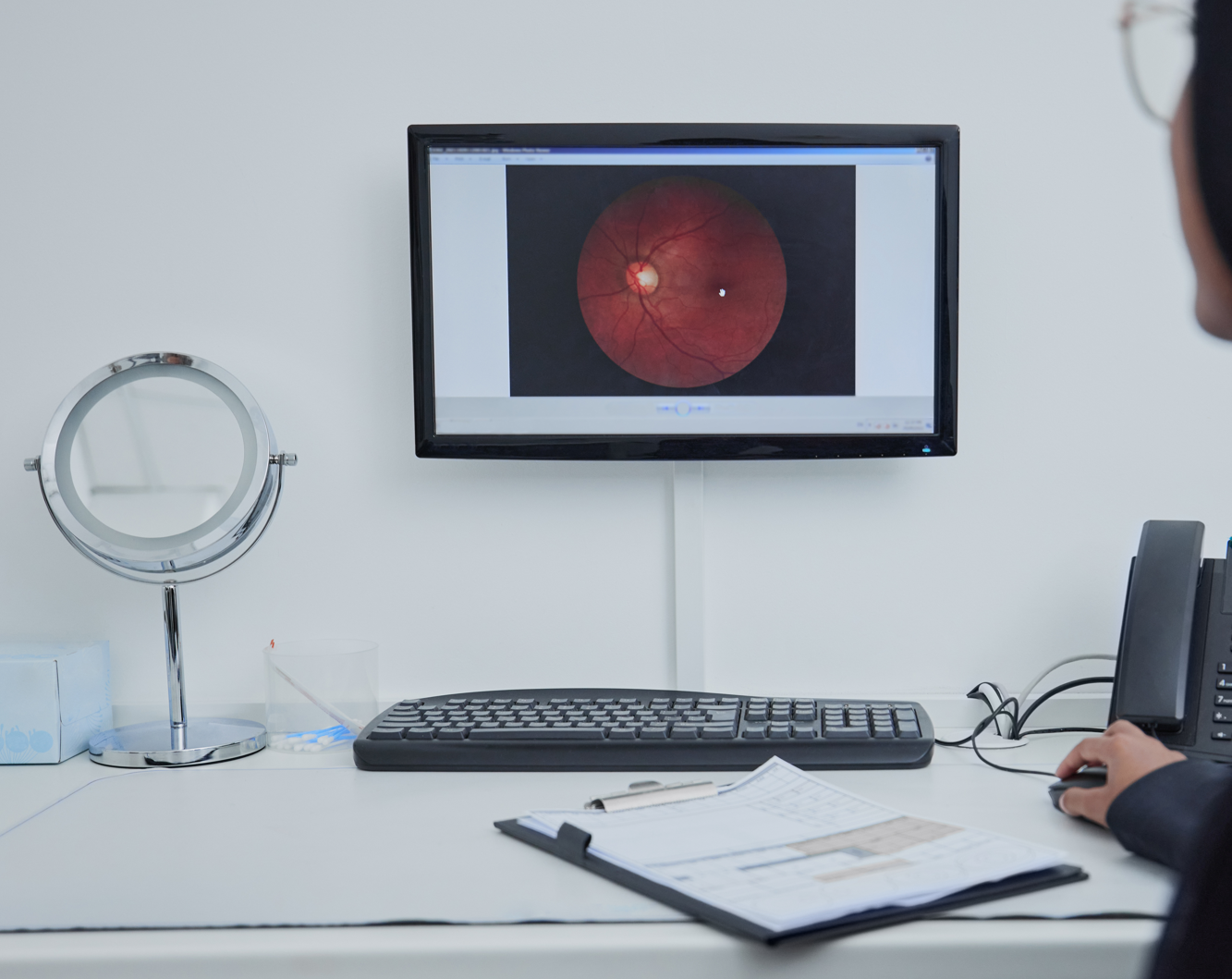The retina is a complex and essential component of our eye, responsible for capturing light and transferring it to the brain to create what we perceive. However, various factors can compromise its function, leading to a range of retinal diseases. Genetic factors play a significant role in some retinal diseases, resulting in hereditary conditions such as the following:
Retinitis Pigmentosa (RP) is a group of hereditary eye diseases in which progressive degeneration of the retina leads to severe impairment of vision. In the usual course of disease, the light-sensitive structures called rods -which allow us to see in dim light and also sense motion- are destroyed early on, causing night blindness in youth. Over time, further degeneration of the retinal cells occur. Eventually, one’s peripheral or side vision becomes constricted until the affected person sees objects as if looking through a tunnel. In most cases, the course of disease is very slow, and progression to total blindness is uncommon. There are several hereditary patterns for retinitis pigmentosa, and multiple genetic defects responsible for the various forms of disease have been isolated. When retinitis pigmentosa is associated with congenital hearing loss, the condition is called Usher syndrome, which is the most common cause of combined blindness and deafness in the United States.
Usher Syndrome is a rare inherited genetic disease that can affect both hearing and vision. Vision loss is caused by the development of RP. Sometimes, it can also cause problems with balance. Researchers have identified three major types of Usher syndrome, designated as types I, II, and III. These types are distinguished by the severity of hearing loss, the presence or absence of balance problems, and the age at which signs and symptoms appear. The types are further divided into subtypes based on their genetic cause. Usher syndrome type II is characterized by hearing loss from birth and progressive vision loss that begins in adolescence or adulthood. People who have Usher syndrome are born with the gene mutation, but they usually get diagnosed as children or teenagers when the symptoms start to appear. There’s no cure for Usher syndrome but early detection and treatment can help people to make the most of their hearing and vision.
Leber congenital amaurosis (LCA) is a rare genetic eye disorder that primarily affects the retina, which is the light-sensitive tissue at the back of the eye. It is a congenital condition, meaning it is present from birth, and causes severe vision impairment or blindness. It results from genetic mutations that disrupt the function of the retina’s photoreceptor cells. Common symptoms, such as nystagmus (roving eye movements) and photophobia (sensitivity to light), typically emerge in infancy. LCA encompasses various subtypes, each linked to specific genetic mutations and different levels of visual impairment.
Presently, there is no cure, but new therapies are being studied for LCA and are providing hope for individuals affected by this condition. Supportive services, like low-vision aids and mobility training, can assist individuals in adapting to their visual challenges.

